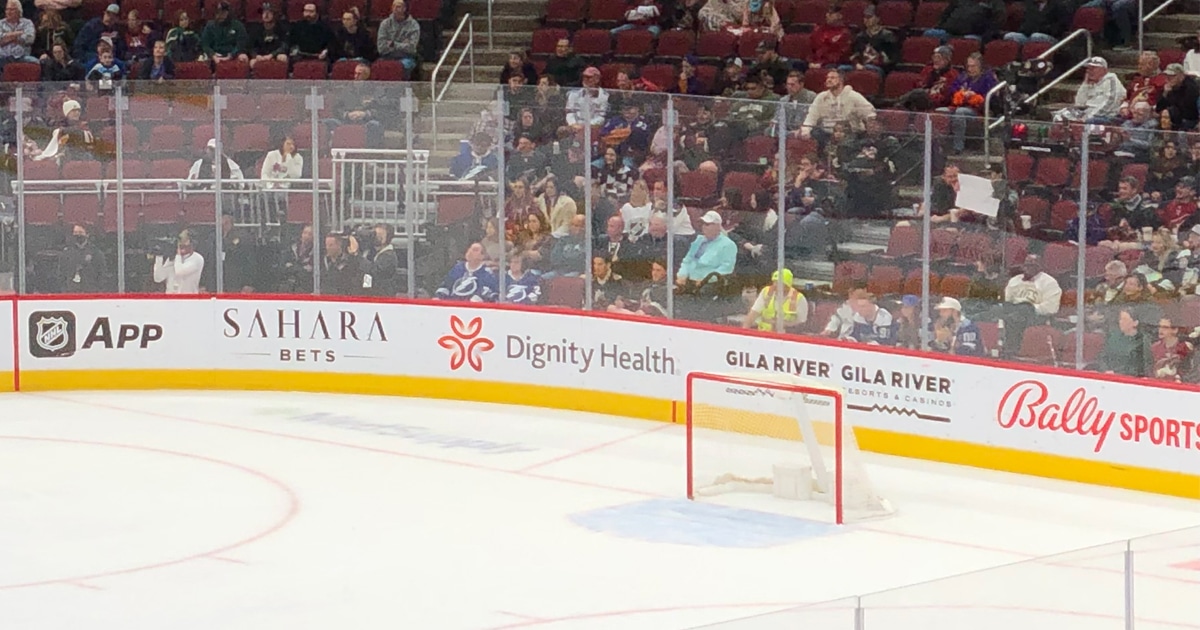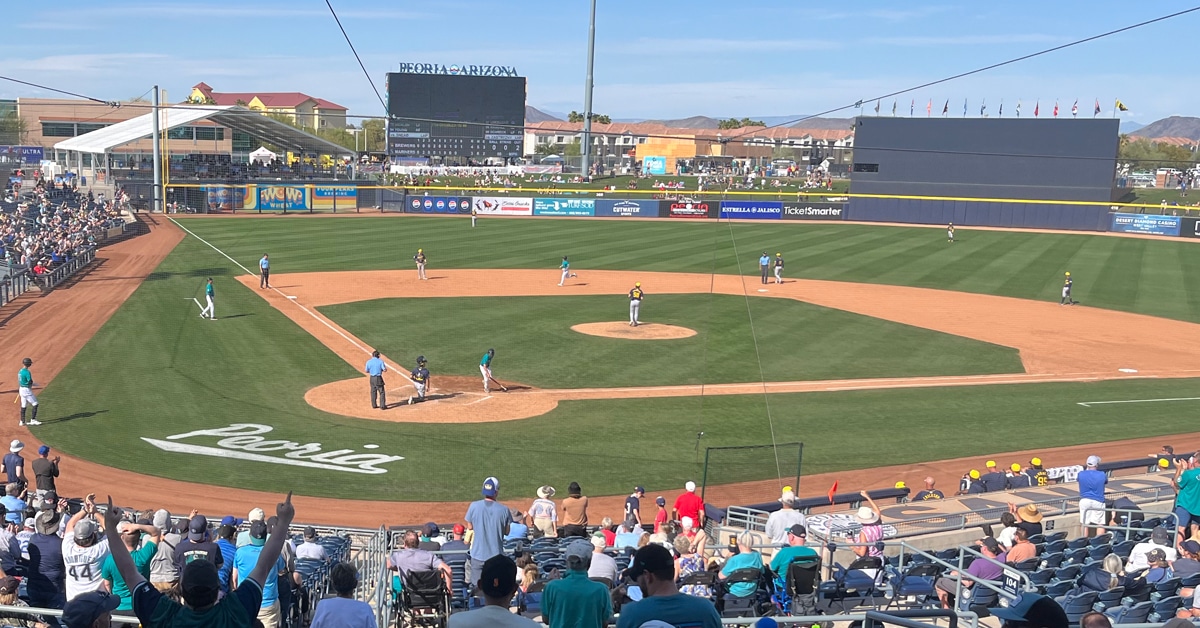It’s that time of year when roughly half of major league baseball comes to Arizona for spring training. For most…
Negotiating a Sports Sponsorship Agreement

If you’re considering an investment in sports or looking to improve the ROI of an existing sports sponsorship investment, the ten minutes you’ll spend reading this blog will be worth your while. Full disclosure, I’ve only negotiated a handful of deals as a sports marketing agency president–some with teams, some with networks, and more than a few event sponsorships.
What I have done extensively is way more advantageous for you… I’ve sat on the other side of that table for years. I’ve formulated and sold sports sponsorships for networks, teams, and events.
Line Drive Sports Marketing specializes in creating a return on your investment for your sports sponsorship.
What Do I Need to Know About Buying a Sports Sponsorship?
Before we get too deep into this, let’s recognize that the people selling you sports marketing assets are typically personable, well-trained, and intelligent sales professionals. They are sophisticated in how they conduct business, with resources that help them to gain an understanding of your industry and hospitality assets that help create a relationship with you as a client.
They are good at what they do. This is why the sports sponsorship industry is reported to be worth more than $57 billion dollars annually.
Sports Sponsorship Sellers are Good … You Need to Be Better
Before you express any interest in purchasing a sports sponsorship, you need to conduct an internal needs analysis that identifies just what you’re looking to accomplish with your investment. As self-serving as this may sound, it’s valuable to bring someone in from outside of your organization. They should provide a critical perspective on your goals and be able to keep you from making an emotional decision that impedes your ability to generate a return on your investment.
The point I just made is important. I encourage you to read that last paragraph again. Oftentimes, sports sponsorship investments are based on team performance or personal affinity. These are not the foundations for making a sound decision on a sports sponsorship investment.
Once you’ve set goals for what you’re looking to accomplish, your next step should be to analyze the market. What sports entities exist in your PMA that have the assets you seek to influence your target audience? Again, be careful not to let your emotions make decisions for you. You may be a huge fan of a particular team, or you may watch a particular network as part of your consumer behavior. Neither of these realities are necessarily bad… but, you need to be aware that your fandom could compromise the efficacy of your investment.
After you’ve identified the most advantageous sports entities in your market, you’ll need to continue to do your homework. This can be done as simply as attending a game, watching a broadcast, or following a team on social media. If you do not have an existing relationship with an account executive from the team or network, that’s 100% OK. I would encourage you not to call in blindly, as that leaves some things to chance. You may end up with a desperate and inexperienced rep who potentially doesn’t have the chops to properly handle your account.
My best advice here is to contact other sponsors and ask them who they work with. This is especially important when you see a well-executed activation or like how a brand is being promoted by a team or network. You can also dig in on LinkedIn to identify both reps and managers that have experience. A little prep work here can make a big difference. At Line Drive Sports Marketing, we never go in blind and given the Kevin Bacon nature of sports, there is rarely a call made that doesn’t have some connection to it.
The Art of Sports Sponsorship Negotiations
That subtitle is misleading. There really isn’t an art to negotiating a great deal. Each team or network has access to assets that are both linear, digital. They also have physical assets that are in venue and off venue. The majority of these assets will be spoken for by their current partners. That being said, there is almost always plenty of opportunities.
You want to know EVERYTHING they have to offer. Why? Because deals end at some point, and perhaps an asset that is currently spoken for will be favorable for your brand in the future. You need to make sure your representative knows that so that they can keep you in mind should that asset ever come available.
Your next steps in this process are critical. Your Account Executive (AE) is trained to sell you as big of a sponsorship as possible. It’s their job. This is how they get paid, and how they are evaluated. It’s the reality of the business, and I’m not chiding them for it. You, as the client, need to know that going in.
If you’ve done your homework, you should possess a decent understanding of the assets you like, the assets they offer, and most importantly, how these assets would enhance your overall marketing strategy. If you haven’t done your homework, you are at a disadvantage.
The Sports Sponsorship Sales Process
It’s here where I have to emphasize an important aspect of sports sales. The business has extensive hospitality assets that you can use to accomplish your goals. Teams, networks, and events also use their hospitality assets to accomplish their goal of selling you a sponsorship. Premium seats, meet and greets with coaches or players, luxury suites and having a legendary former player attend a pitch are all ways in which teams, networks, and events can play up the emotional element of the purchase. Again, not criticizing here – I’ve done this many, many times myself.
If you follow the process as I’ve outlined it here, you will be able to safely navigate some of these distractions and make the right decision for your brand. At this point, the selling entity should have conducted a needs analysis and possess a full understanding of your goals, as well as the budgets you’ve allotted to achieve them. In one very real sense, it’s now on them to come back to you with a proposal. In another real sense, you shouldn’t be disconnected from the proposal process.
In some of my former positions, I would actually sit down with the client to formulate a well crafted solution for their needs. This gave them ownership while also making it more of a mutually beneficial agreement than a sale. So, instead of making a proposal and “pitching” the client, we’d simply sit down and make one together. This changes the entire dynamics of the sales process.
Get Creative With Your Sports Sponsorship
Another key aspect to consider at this point in the process is creativity. Teams, networks, and events have set assets but they also have the ability to get creative. As long as the activation is manageable AND impactful, you should explore creative ways to get the deal you want. In my opinion, buying just what a team, network, or event has to offer on their rate card is limiting. Sports, sports broadcasts, and special events are uniquely capable of being creative. Use that to your advantage.
Challenge yourself and your rep with these questions:
What can we do to differentiate ourselves from your other sponsors?
What opportunities exist outside of the event where consumers are being stimulated by the action on the court/field/ice, etc.? How do we take the sponsorship outside of the venue?
How can this sponsorship positively affect our other forms of outreach?
You as the client are now in the position to sign a well-structured sports sponsorship contract that should be beneficial to your brand. Watch for deal points or contract terms that can ultimately water down the efficacy of your sponsorship. Look for ways to secure specific assets while also holding the team, network, or event accountable for making sure their activation of the sponsorship is never compromised. A good best practice is to hire an outside entity to evaluate your assets every year (yes, Line Drive Sports Marketing does that). Escalators, opt-outs and any other ‘automatic alterations’ to your agreement need to be vetted carefully. Again, this is where having an outside entity on your side of the table might be hugely beneficial.
There’s a reason that (usually) only the biggest and most significant brands in a given space engage in sports sponsorships. The cynic in me wants to say that only big brands have the money to spend in the less-than-efficient world of sports sponsorship – but the truth is, I’m not cynical. You can forge a highly impactful, well-structured sports sponsorship for your brand IF you do your homework and IF you approach it strategically. In fact, sports sponsorships are one of the best ways to achieve scale for your marketing message.
Want to learn more?
Perhaps you’d like to have a conversation about your sponsorship plans or your pending renewal? There’s no obligation for a free consultation on what you may be considering when it comes to doing business with a sports team, a sports network, or a sporting event.



